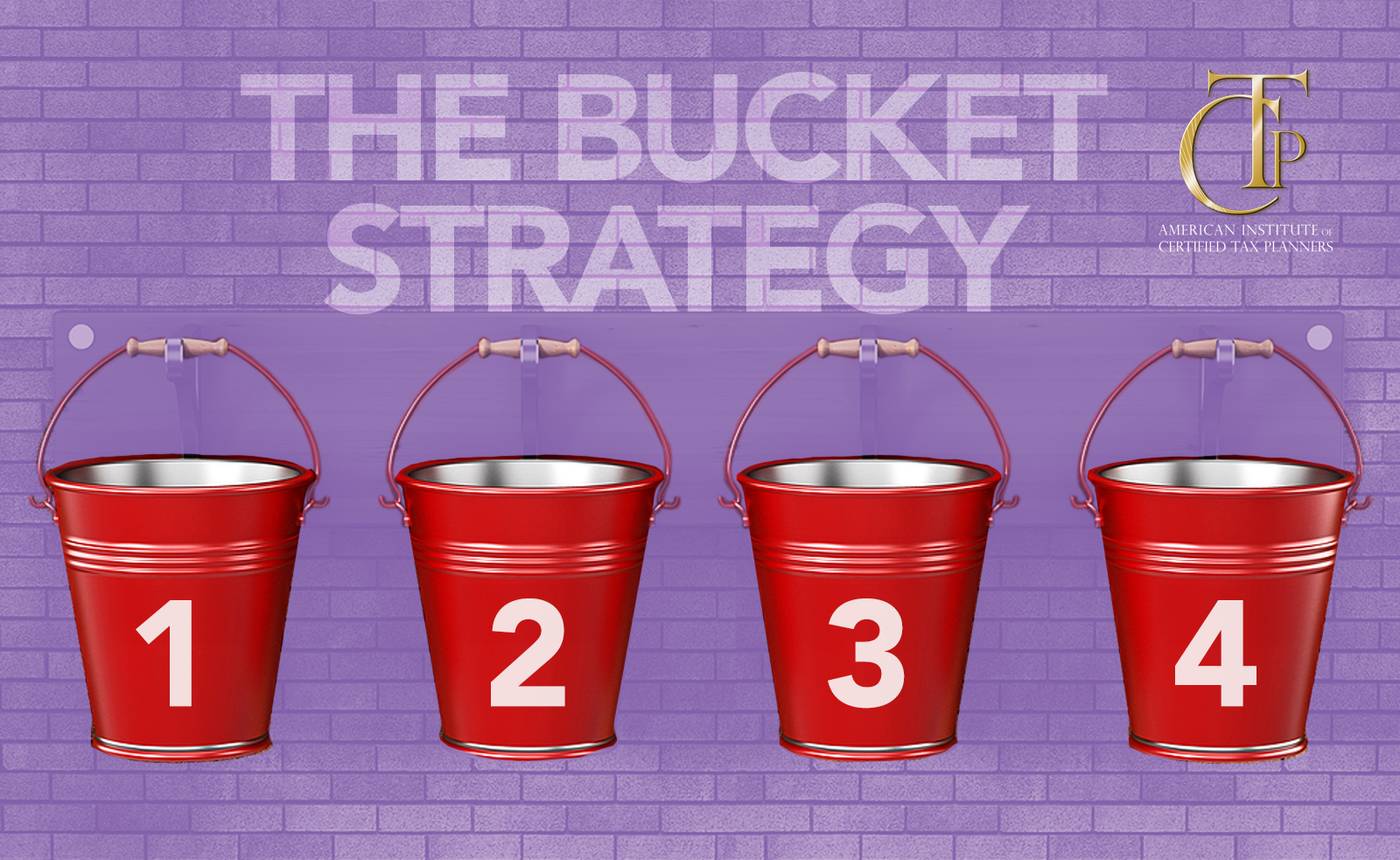Planning for retirement also means planning for retirement income taxes. Creating a tax plan for retirement will ultimately allow you to spend less money on taxes and put more toward the lifestyle you want. A major benefit of working with a Certified Tax Planner is that you have an expert in your corner helping you project the tax implications of different financial decisions.
As you begin planning your strategy for retirement income, you will want to be familiar with the “bucket strategy.” This strategic approach to managing taxes takes into consideration four basic types of retirement income:
- Taxable non-retirement investments (brokerage accounts)
- Pre-tax retirement funds
- Tax-free retirement funds
- Social Security payments
How do taxes come into play with these four types of retirement income?
Taxable non-retirement investments or brokerage accounts. With these investments, you pay tax every year as your investments earn money whether or not you actually withdraw funds from that account. If you have held that investment for one year or less (short-term capital gains), you will be taxed at ordinary income tax rates. However, if you have held that investment for more than a year (long-term capital gains), you will be taxed at the lower capital gains tax rates.
Pre-tax retirement funds. With pre-tax accounts like a 401(k) or IRA (individual retirement account), income starts out tax-advantaged because you do not have to pay taxes when you transfer it into your retirement account. However, withdrawals from these accounts are taxed at ordinary income rates. These accounts can cause a major spike in your tax rate during retirement if you don’t plan for it effectively, since withdrawals are counted as income.
Tax-free retirement funds. This mainly refers to the Roth IRA account. Unlike a regular IRA (pre-tax fund), the money is taxed before you invest it into your account, which means that the withdrawals are tax-free.
Social Security. Taxpayers often forget that Social Security is a tax-advantaged source of retirement income. At maximum, these benefits are only 85% taxable. The income threshold is fairly low for Social Security to be fully tax-free (currently set at no more than $34,000), but many retirees will have years where their taxable income is under that threshold, so knowing when those years might be and planning in advance for that boost in Social Security income can make a big difference.
Once you’ve mapped out where all of your assets are and how much income you need on an annual basis to sustain your lifestyle, the next step is to think about what “bucket” you’re going to pull from and when. The sequence can matter greatly, since distributions from each type of account have different tax consequences. At this point, strategy is all about timing.
The most common advice in past decades has been to tap into your pre-tax accounts (such as IRAs) first to avoid required minimum distributions (RMDs) and the potential of higher tax rates during retirement, since taxes are deferred until you make withdrawals. Conventional wisdom was that you should spend your IRA first and let your brokerage accounts grow so you can withdraw that money later at a lower tax rate.
However, in recent years, as people are beginning to live longer and spend more years in retirement, some experts have suggested that it makes more sense to spend the brokerage accounts first and hold onto the IRAs for longer because you see more compounding growth with an IRA. If you let the IRAs continue to grow, you can end up with more income in the end.
A final strategy is to split your annual withdrawals between the two types of accounts. Instead of draining either your pre-tax or your brokerage accounts, you would take half of your total from each—for instance, if you take $50,000 out of your IRA, you take $50,000 out of your brokerage account. Since the money in your brokerage account was already taxed in the year you earned the money, this can help lower your annual income and keep you in a lower tax bracket.
With either strategy, the key is to manage your tax brackets by creating a proactive tax plan. If you begin formulating a tax strategy well before you reach retirement age, you may even be able to lock in a lower tax bracket by controlling which buckets you are drawing from and when you are paying taxes on that income.
For expert assistance implementing the bucket strategy and creating your own retirement tax plan, reach out to a Certified Tax Planner today.







